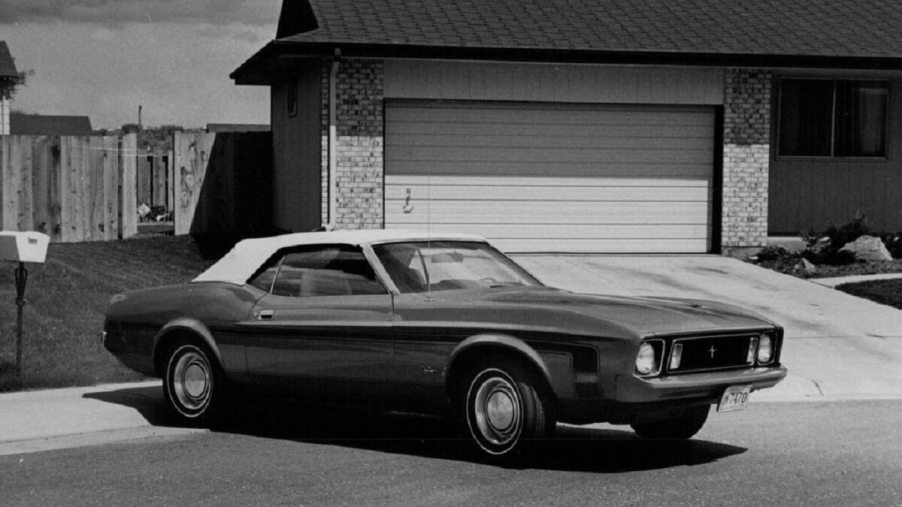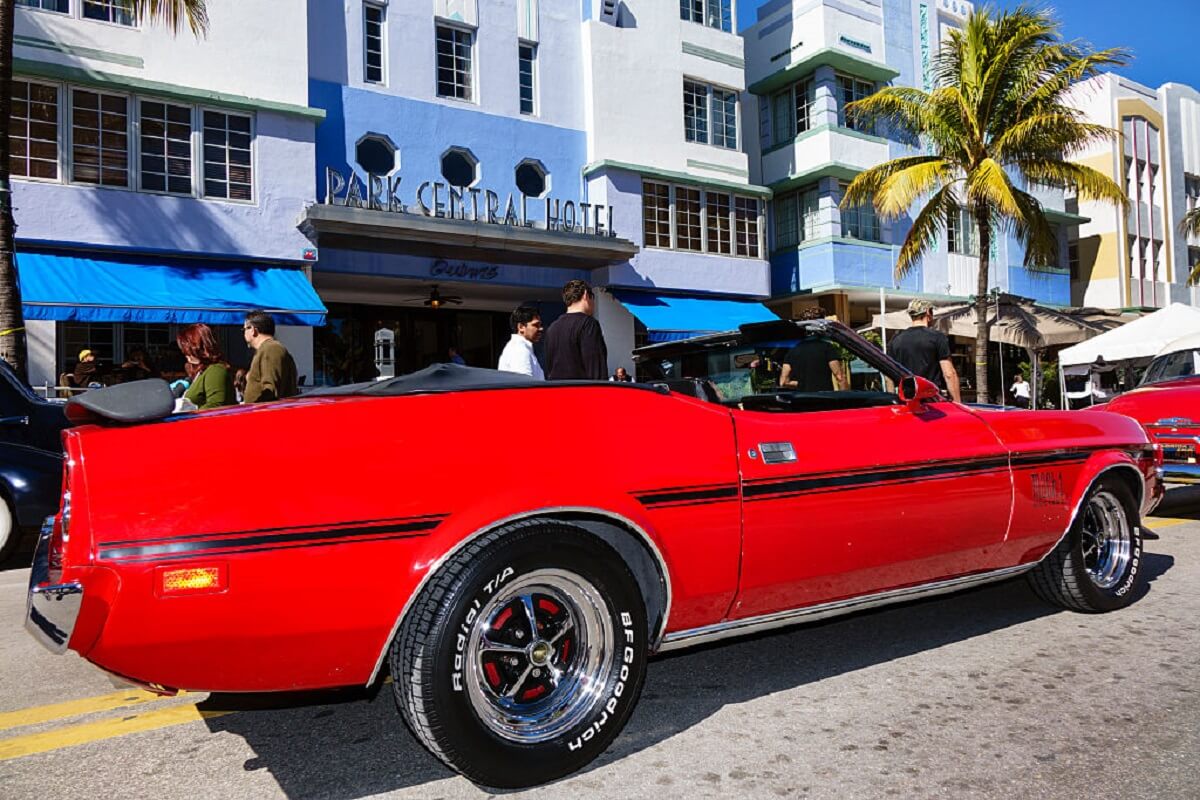
The Biggest Ford Mustang Is 1 of the Worst Mustangs Ever
Perennial arguments among pony car enthusiasts for the worst Ford Mustang tend to start and stop with the Mustang II. However, at the end of the first-generation model’s tenure, a few bloated boats were overweight, underpowered, and stretched from sea to shining sea. Enter the 1973 Ford Mustang and its extensive, posh Grande trim. While the supersized ‘Stang doesn’t get the same loathsome reputation as the second-gen Mustang or the purist-rejected Mach-E, it has the on-paper credentials of a lazy land yacht.
What year was the biggest Mustang?

The biggest Ford Mustang by dimension is the 1973 model. It gained weight and length over previous first-generation models without gaining any noteworthy power.
| Length | 189.5 inches |
| Width | 74.1 inches |
| Weight (Hardtop model) | 3,590 lbs (engine dependent) |
At 189.5 inches, the early 1970s pony car is just under 16 feet long. For a modern comparison, a Mustang Grande from the time is longer than a 2023 Mercedes-Benz C-Class, a luxury sedan that seats five with four doors. Moreover, the 1973 model is nearly eight inches longer and six inches wider than a 1965 Mustang, per CJ Pony Parts.
Moreover, the last gen one model arrived on the cusp of one of the most significant events in the development of the modern automotive industry, the 1973 oil crisis, and the resultant malaise era. Coincidentally, the dreaded Mustang II arrived just after the 1973 model, and it shrank by over 14 inches in length.
How much horsepower did a 1973 Ford Mustang have?
Unfortunately, the 1973 Ford Mustang didn’t pack the grunt to match its girth. The most horsepower the ‘73 model offered was 266 horsepower with a 351 Cleveland V8.
| 250ci Thriftpower six-cylinder | 98 horsepower |
| 302ci Windsor V8 | 140 horsepower |
| 351 Cleveland V8 | 177-266 horsepower |
According to Mustang Specs, the Thriftpower six-cylinder engine produced a paltry 98 horsepower. Figures that low means the six-cylinder ‘Stang has just 0.0273 horsepower per pound.
Conversely, the 1974 Mustang II produced just 88 horsepower from its four-cylinder mill. However, the Mustang II’s lighter curb weight meant closer to 0.0332 ponies per pound. Even the hated second-gen car made more power per pound than the six-cylinder 1973 Mustang.
What’s special about the 1973 Ford Mustang?
While the 1973 Mustang was large, underpowered, and arguably not as attractive as earlier first-generation models, it has some seriously redeeming qualities. For starters, the 1973 model was the final first-gen Mustang, just before the Pinto-based Mustang II took over.
Furthermore, the Mach 1 from the model year carried one of the most beloved historic Mustang nameplates. Of course, the monstrous pony car is true to the original message of the Mustang, namely, an appealing cruiser for good times. You’re just not going to get where you’re going with any urgency.



